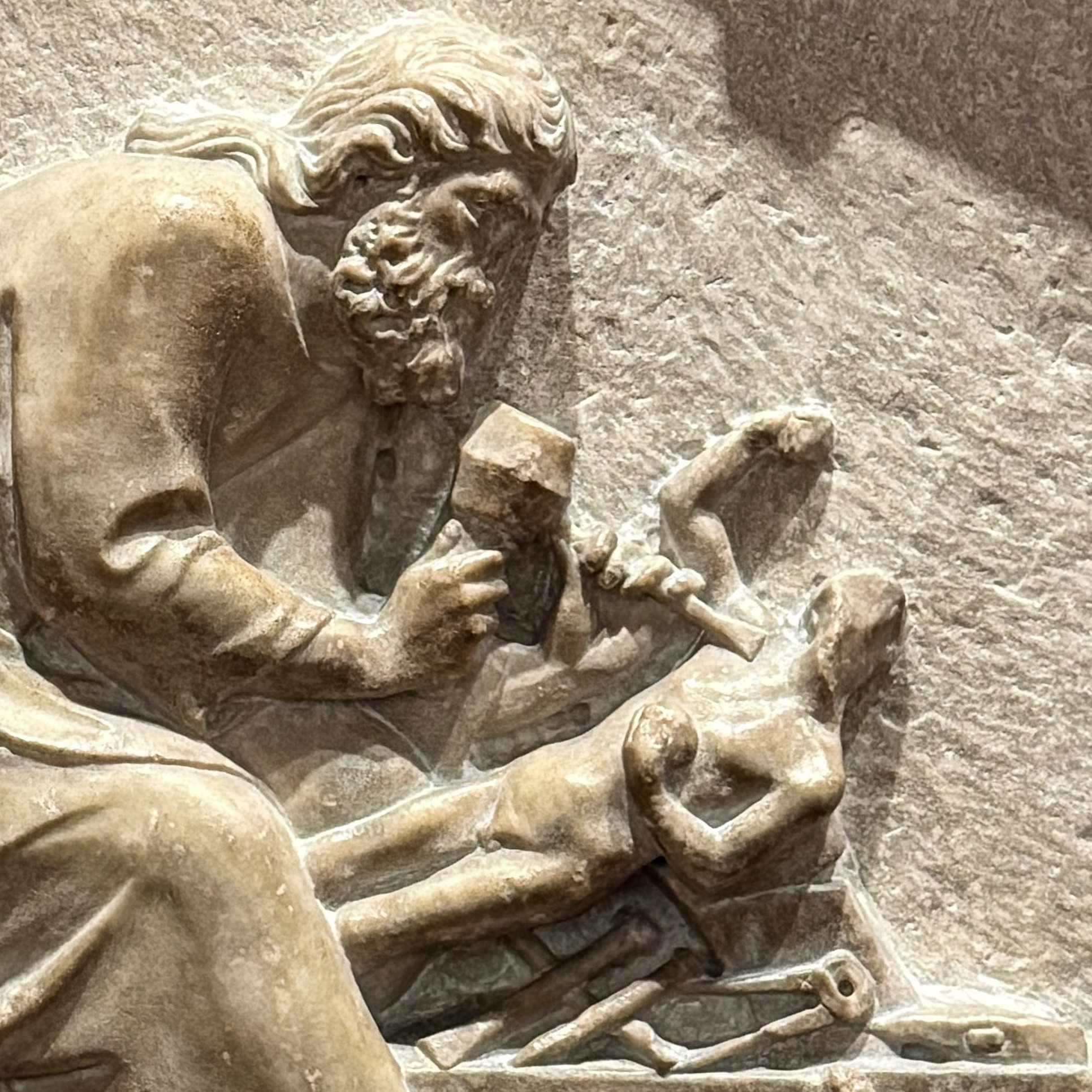Florenz – Ghiberti und das Paradiesportal: als Vorstufe zu dem weltbekannten Meisterwerk der Kunst des Reliefs ein Detail von Andrea Pisano.
Ghiberti and the Paradise Portal: on the way to the world-famous masterpiece of relief art, the detail of a preliminary stage by Andrea Pisano.
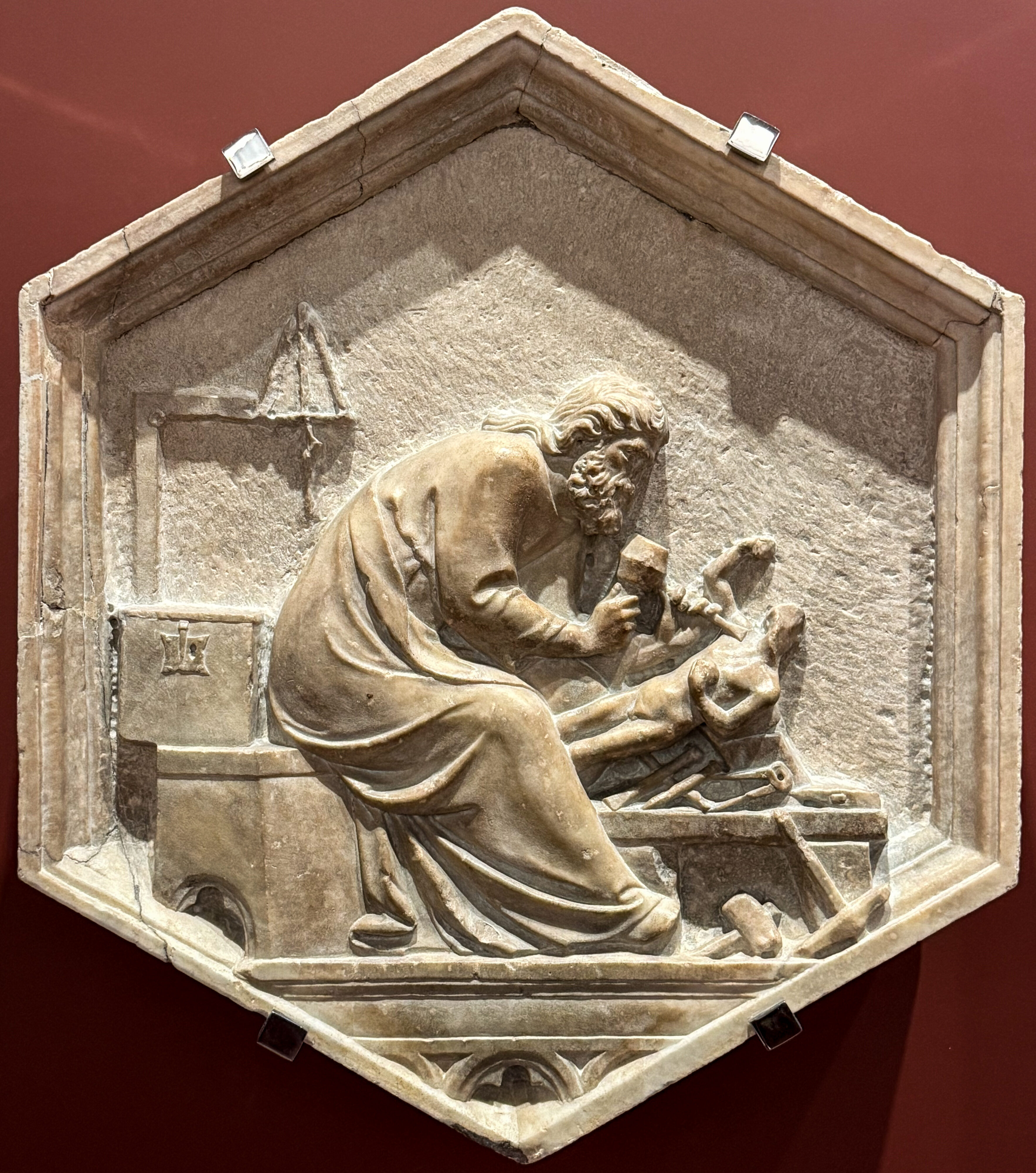
Florenz, Museo dell’Opera del Duomo: Andrea Pisano (ca. 1290-1348), Phidias oder die Kunst der Bildhauerei, um 1340
Ich starte meine Bilderserie von Meisterwerken der Skulptur und Malerei in Florenz mit berühmten Reliefs von der Nordseite des Campanile. Der Bildhauer arbeitet in seiner Werkstatt an einer männlichen Skulptur.
Andrea Pisano (c. 1290-1348), Phidias or the Art of Sculpture, c. 1340
I begin my series of masterpieces of sculpture and painting in Florence with the famous reliefs on the north side of the Campanile. The sculptor works in his studio on a male sculpture.

Andrea Pisano, Apelles oder die Kunst der Malerei, um 1340
Der Maler sitzt in seiner Werkstatt auf angekipptem Hocker an der Staffelei. Über ihm ein kleiner Flügelaltar, rechts ein großer. Phidias und Apelles, die großen Vorbilder der griechischen Antike, gelten als Stifter bzw. Schutzpatrone künstlerischer Tätigkeit.
Andrea Pisano, Apelles or the Art of Painting, c. 1340
The painter sits in his workshop on a tilted stool at the easel. Above him is a small winged altar, to the right a large one. Phidias and Apelles, the great models of Greek antiquity, are regarded as the patron saints of artistic activity.
Der berühmte Wettbewerb: die Konkurrenzreliefs von 1401
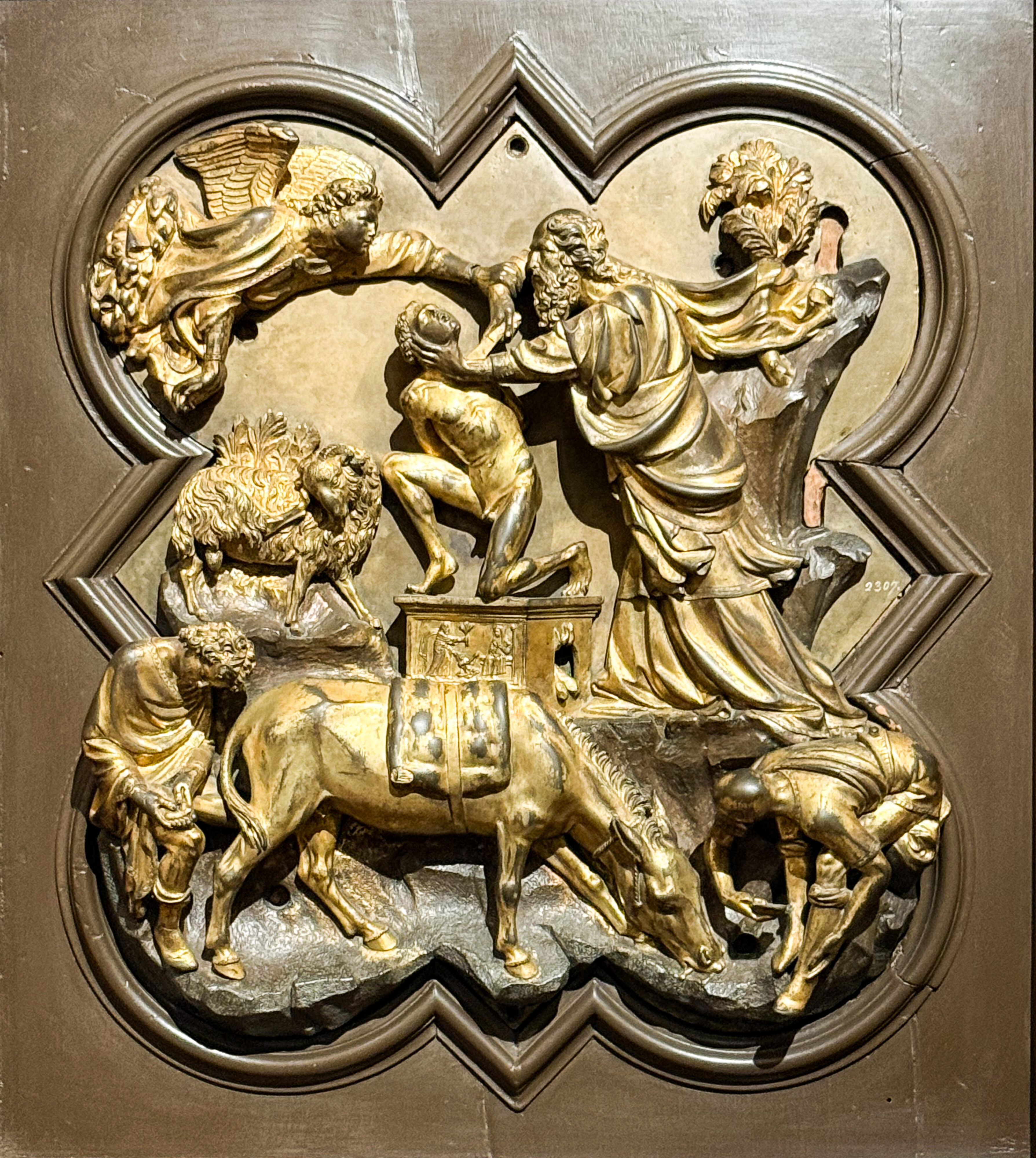
Museo del Bargello: Filippo Brunelleschi, Opferung Isaaks, 1401, Bronze, vergoldet, ca. 45 x 38 cm
Abraham will gerade seinen Sohn Isaak durch einen Stich in den Hals töten, da fällt ihm der Engel in den Arm. Die Bildelemente hat Brunelleschi (1377-1446) klar und spannungsreich neben- und übereinander angeordnet. Darunter unten links eine Variante des antiken Dornausziehers.
Filippo Brunelleschi, Sacrifice of Isaac, 1401, bronze, gilded, ca. 45 x 38 cm
Abraham is about to kill his son Isaac by stabbing him in the neck when the angel falls into his arm. Brunelleschi (1377-1446) has arranged the pictorial elements clearly and excitingly next to and on top of one another. Below, at the bottom left, is a variant of the ancient thorn extractor.
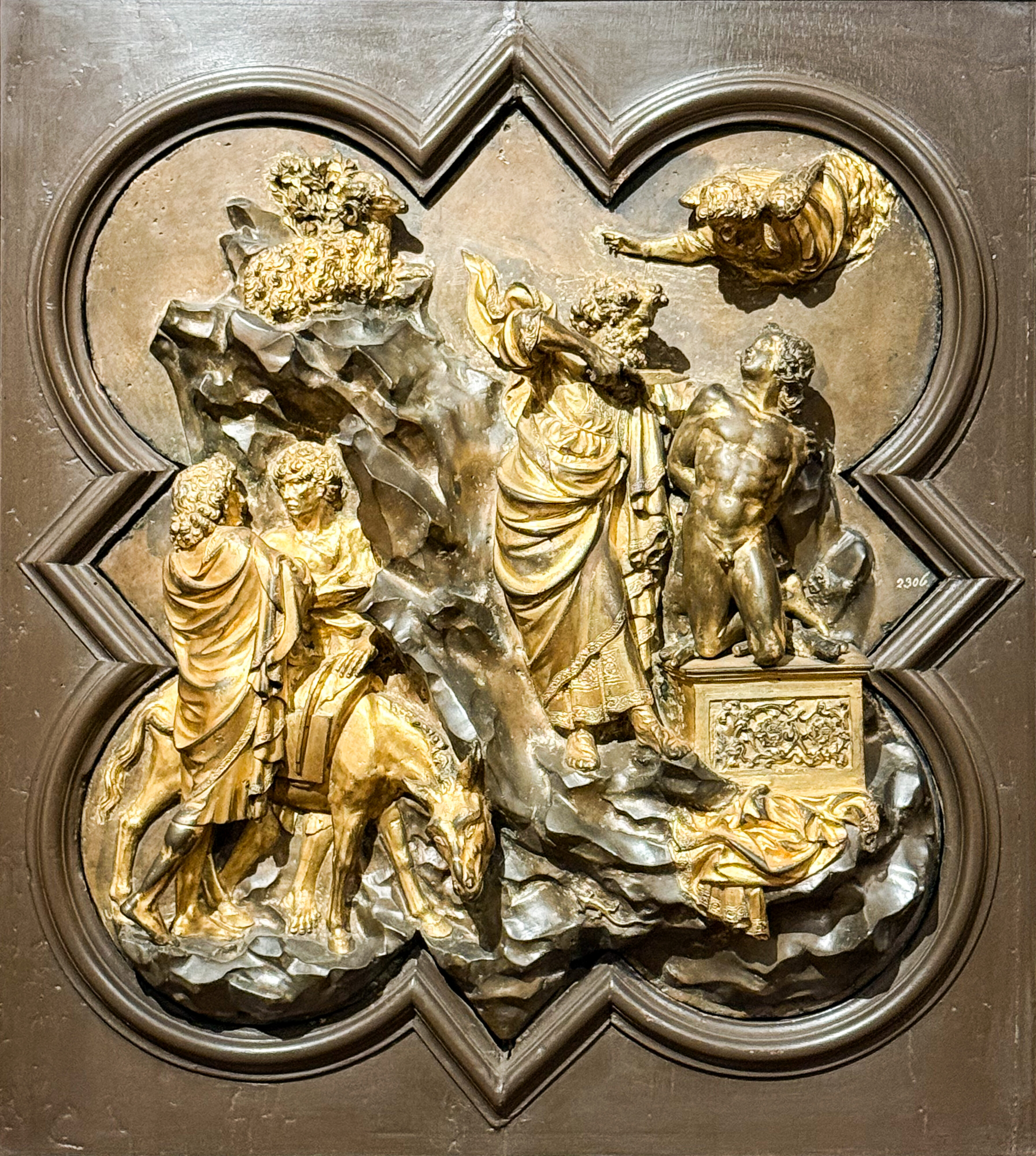
Lorenzo Ghiberti, Opferung Isaaks, 1401, Bronze, vergoldet, ca. 45 x 38 cm
Ghiberti (1378-1445) komponiert diagonal und in fließenden Bewegungen. Die Wirkung ist geschlossener und dynamischer als bei Brunelleschi. Die beiden weltberühmten Vierpassreliefs sind die einzig erhaltenen von einem Wettbewerb unter sieben Teilnehmern und Gegenstand zahlreicher Analysen. Es geht um die Gestaltung des Ostportals des Baptisteriums. Ghiberti gewinnt wegen der Art seiner Darstellung und geringerer Herstellungskosten. Brunelleschi ist verletzt. Er wendet sich weitgehend von der Skulptur ab und der Architektur zu.
Sacrifice of Isaac, 1401, bronze, gilded, ca. 45 x 38 cm
Ghiberti (1378-1445) composed diagonally and in flowing movements. The effect is more cohesive and dynamic than in Brunelleschi’s work. The two world-famous quatrefoil reliefs are the only surviving works from a competition involving seven participants and have been the subject of numerous analyses. This competition was for the design of the east portal of the Baptistery. Ghiberti wins because of the nature of his depiction and lower production costs. Brunelleschi is hurt. He largely turned away from sculpture and towards architecture.
Florenz – Ghiberti und das Paradiesportal: sein erster Auftrag für das Baptisterium San Giovanni
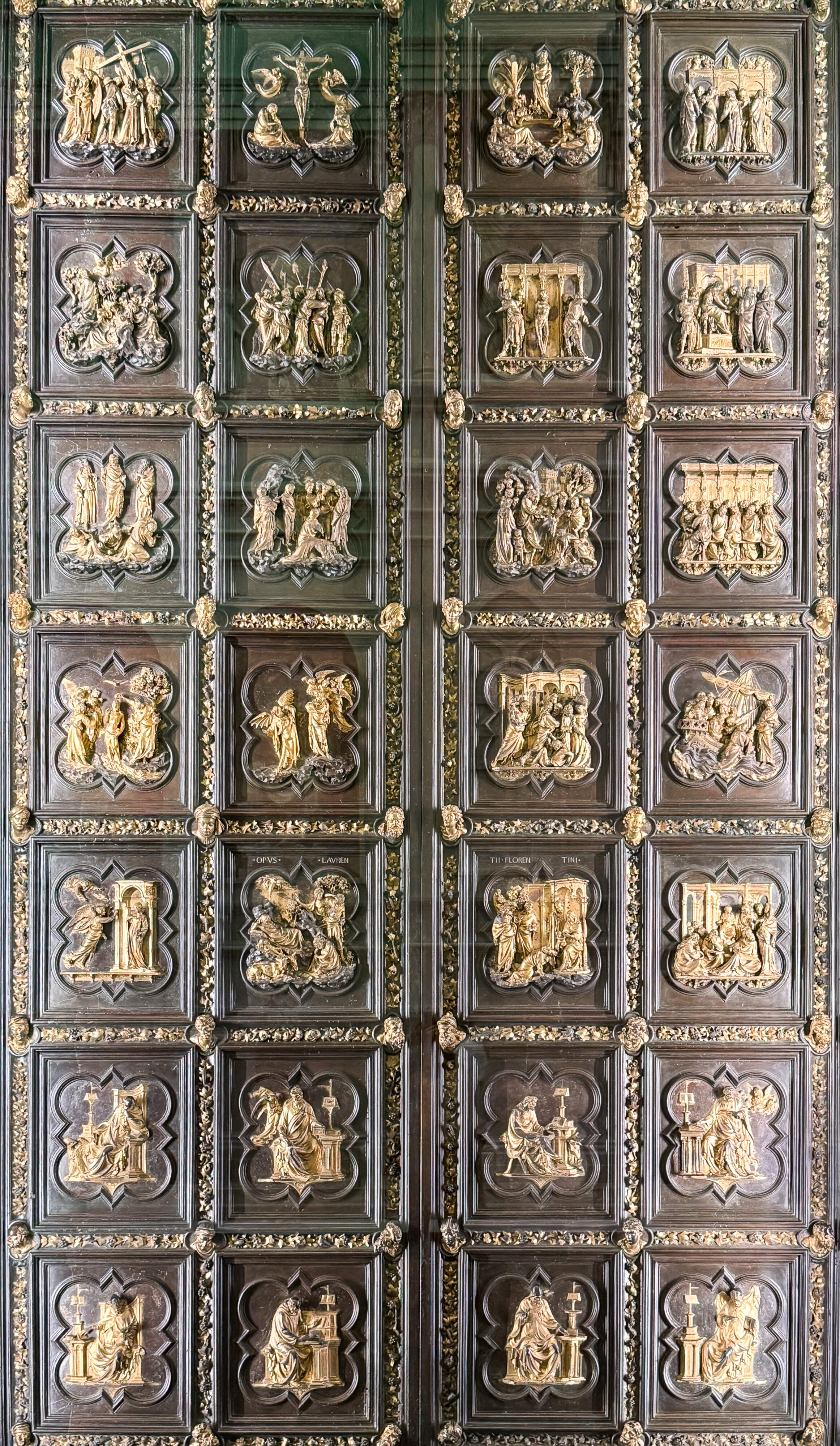
Museo dell‘Opera del Duomo: Lorenzo Ghiberti, Szenen des Neuen Testaments, Nordportal des Baptisteriums (dort heute ein Abguss), 1403-1424, Bronze, vergoldet
Bis zur Fertigstellung der sog. Paradiestür am Hauptportal gegenüber von der Kathedrale. Dann versetzt auf die Nordseite. 20 der 28 Vierpässe schildern 20 Szenen aus dem Leben Jesu, angeordnet über den vier Evangelisten und den vier Kirchenvätern.
Lorenzo Ghiberti, Scenes from the New Testament, North Portal of the Baptistery of San Giovanni (a cast in situ), 1403-1424, gilded bronze
Until the completion of the so-called Paradise DoorParadise Door at the main portal opposite the Cathedral, then moved to the north side. 20 of the 28 quatrefoils depict 20 scenes from the life of Jesus, arranged above the four Evangelists and the four Fathers of the Church.
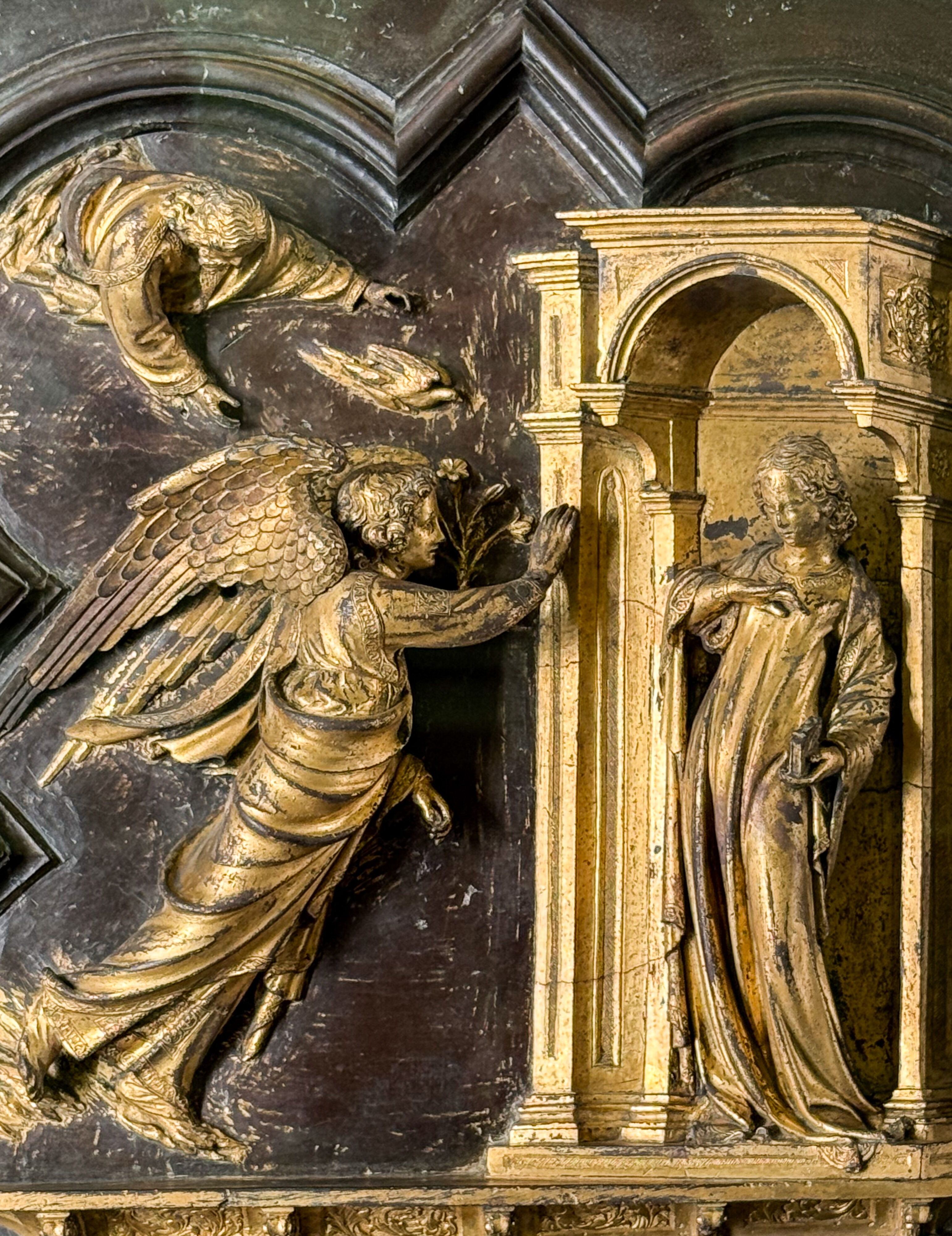
Lorenzo Ghiberti, Verkündigung an Maria, Nordportal des Baptisteriums San Giovanni
Die drei Gestalten und die Taube des Hl. Geistes bezaubern durch klare Anordnung, Anmut, Eleganz und zarte Empfindung.
Ghiberti, Annunciation, North portal of the Baptistery of San Giovanni
The three figures and the dove of the Holy Spirit enchant with their clear arrangement, grace, elegance and delicate feeling.
Frühlingshaft wie die florentinische Frührenaissance
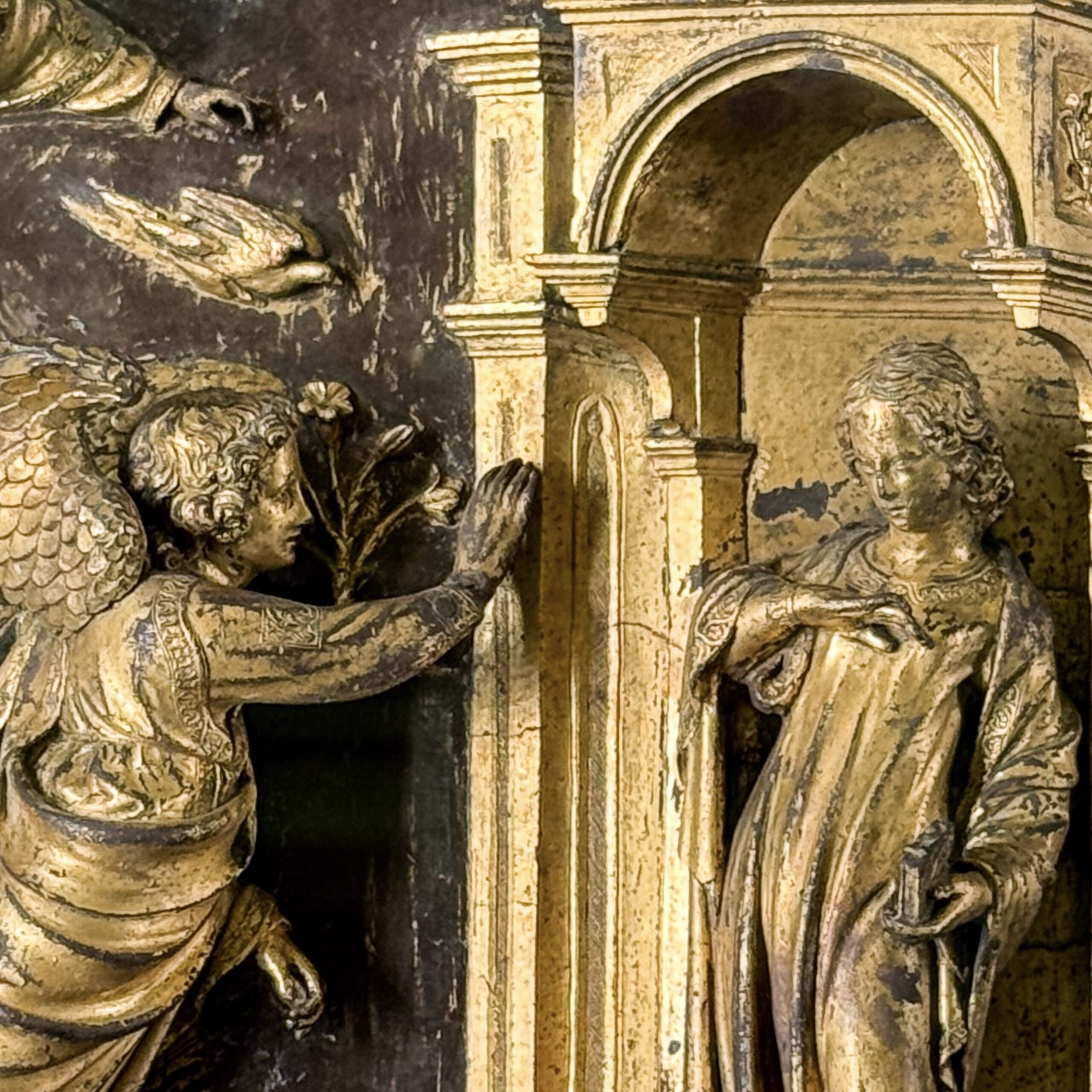
Anbetung von Hirten und Königen
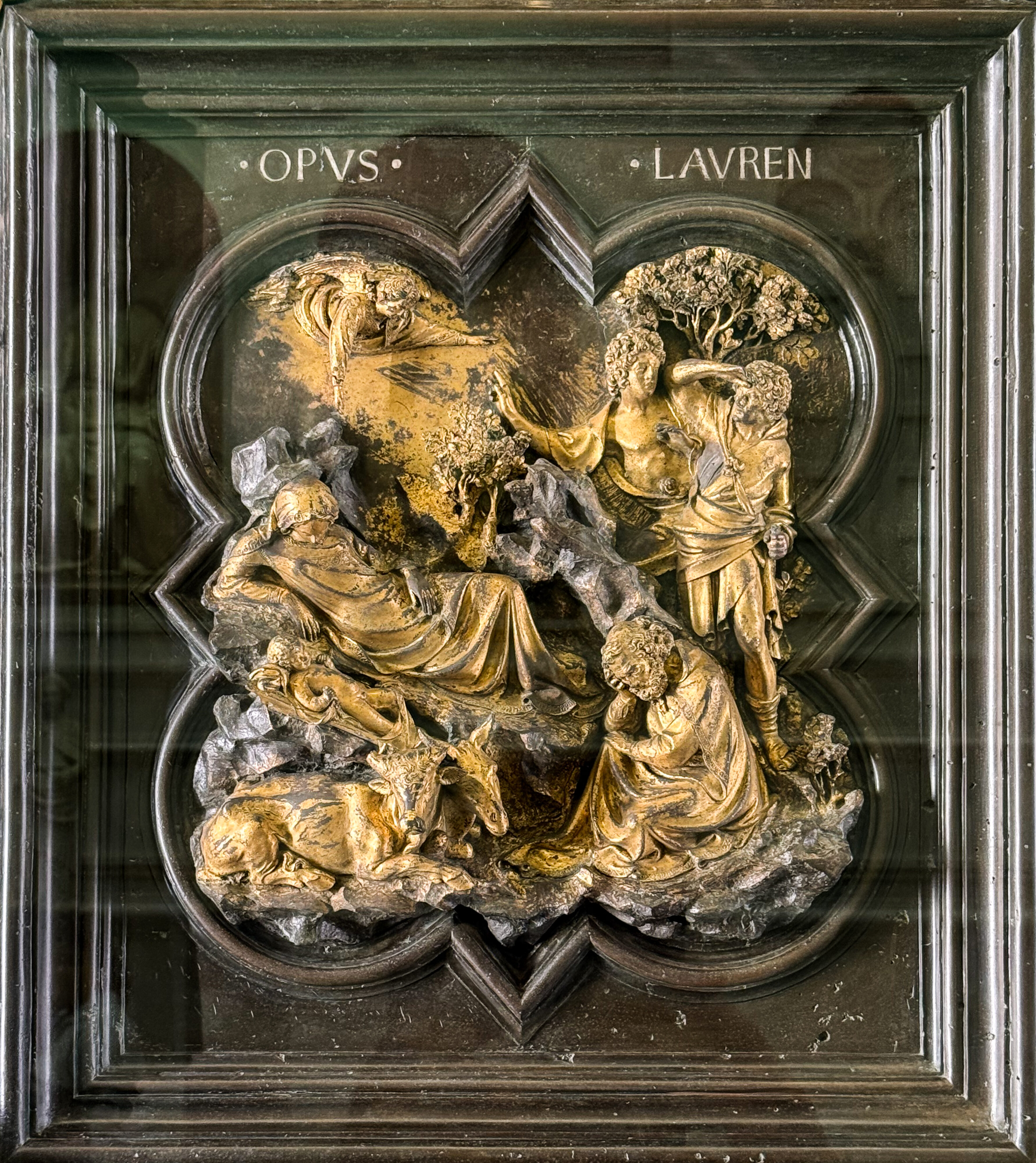
Lorenzo Ghiberti, Geburt Christi, Nordportal des Baptisteriums San Giovanni
Maria lagert schräg über dem Jesuskind, darunter Ochs und Esel. Die Andeutung einer Felsenhöhle wird vom schlafenden Joseph unten verdeckt. Darüber erblicken die Hirten einen Engel. Dieser wendet sich an sie mit der Linken und weist ihnen mit seiner Rechten den Weg nach Bethlehem. Ein Meisterwerk in der Mitte der Tür, auf diesem und dem nächsten Feld signiert.
Ghiberti, Birth of Christ, North portal of the Baptistery of San Giovanni
Mary is lying diagonally above the infant Jesus, with the ox and donkey below. The suggestion of a rocky cave is concealed by the sleeping Joseph below. Above them, the shepherds see an angel. He addresses them with his left hand and shows them the way to Bethlehem with his right. A masterpiece in the middle of the door, signed on this and the next field.
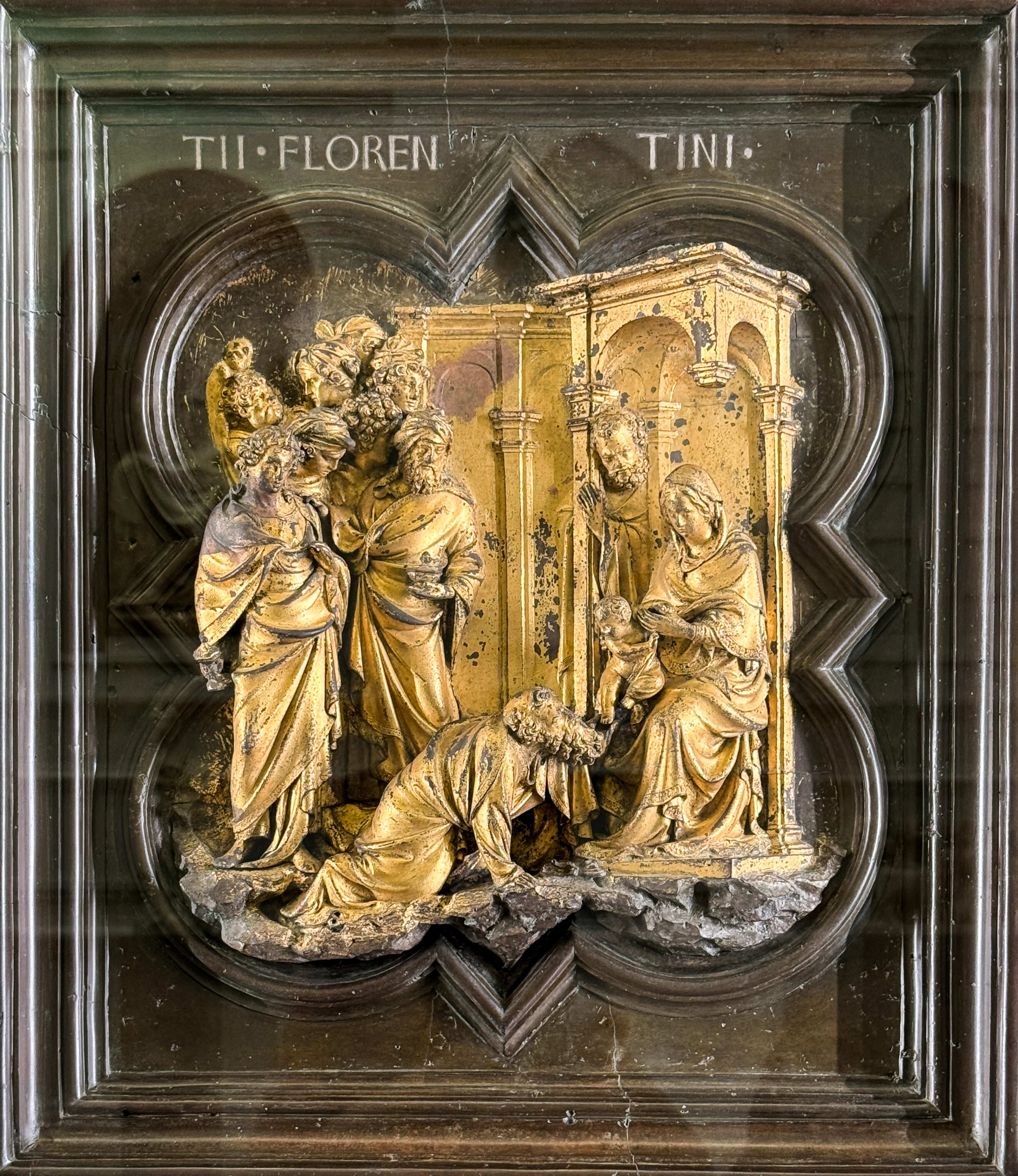
Lorenzo Ghiberti, Anbetung der Könige, Nordportal des Baptisteriums San Giovanni
Die noble Architektur der Verkündigung wird erweitert, um den Unterschied zur Landschaft der Hirten zu verdeutlichen.
The Adoration of the Magi, North portal of the Baptistery of San Giovanni
The architecture of the Annunciation is expanded to emphasize the difference to the landscape of the shepherds.
Florenz – Ghiberti und das Paradiesportal
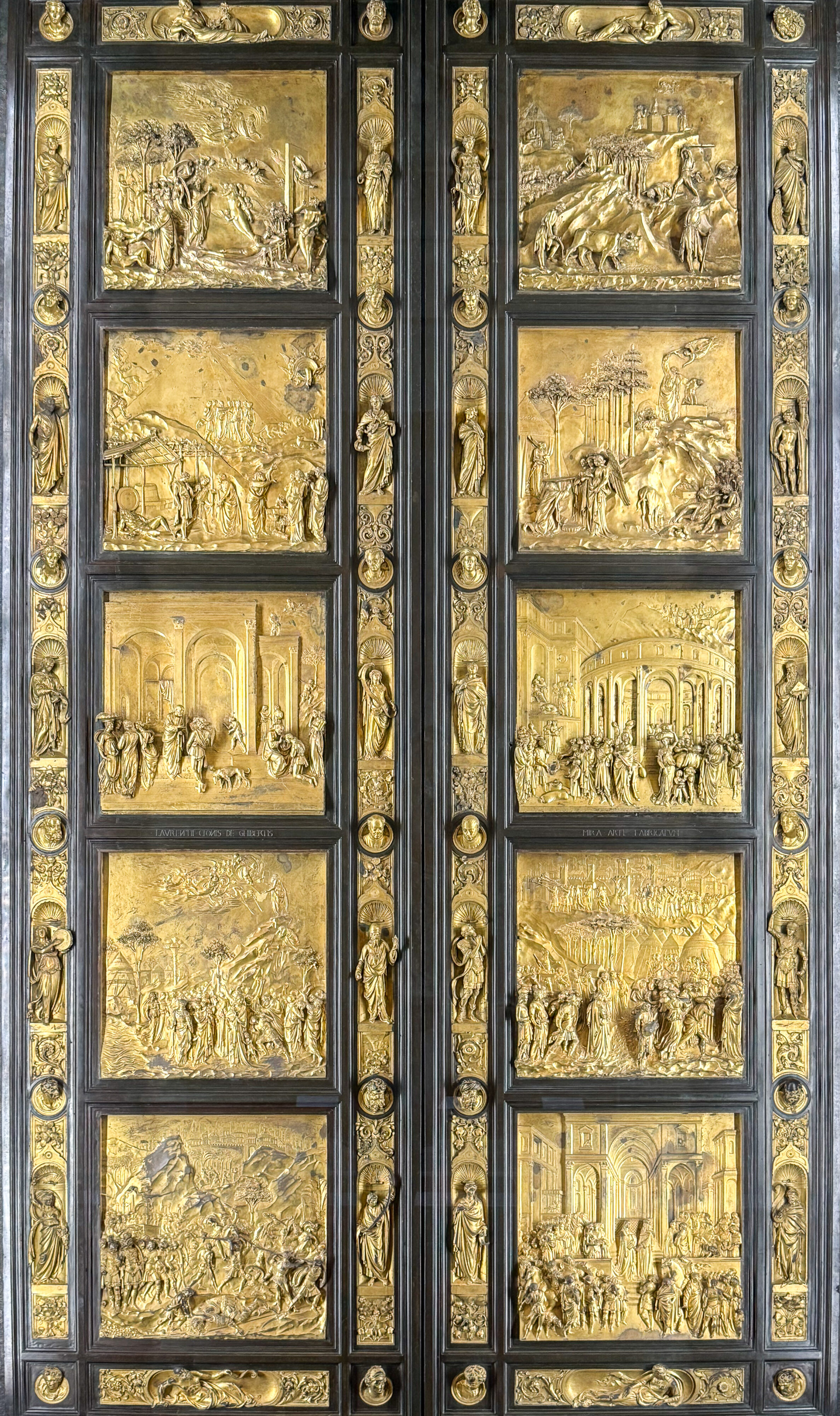
Museo dell‘Opera del Duomo, Lorenzo Ghiberti, Szenen des Alten Testaments, Ostportal des Baptisteriums (dort ein Abguss), 1425-1452, Bronze vergoldet
Die unerhörte Weiterentwicklung im Vergleich zu Ghibertis erstem Portal hin zu einer quasi malerischen Darstellung perspektivisch wiedergegebener Räume löst von Anbeginn Begeisterung aus. Ghiberti verbindet auf meisterliche Weise Flach- und Hochrelief. Von Michelangelo soll der Name „Paradiestür“ stammen.
Lorenzo Ghiberti, East portal of the Baptistery with Scenes from the Old Testament, 1425-1452, bronze, gilded (a cast in situ)
The unprecedented development compared to Ghiberti’s first portal towards a quasi-painterly depiction of spaces rendered in perspective aroused enthusiasm from the outset. Ghiberti masterfully combines low and high relief. The name “Door of Paradise” is said to have come from Michelangelo.
David und Goliath
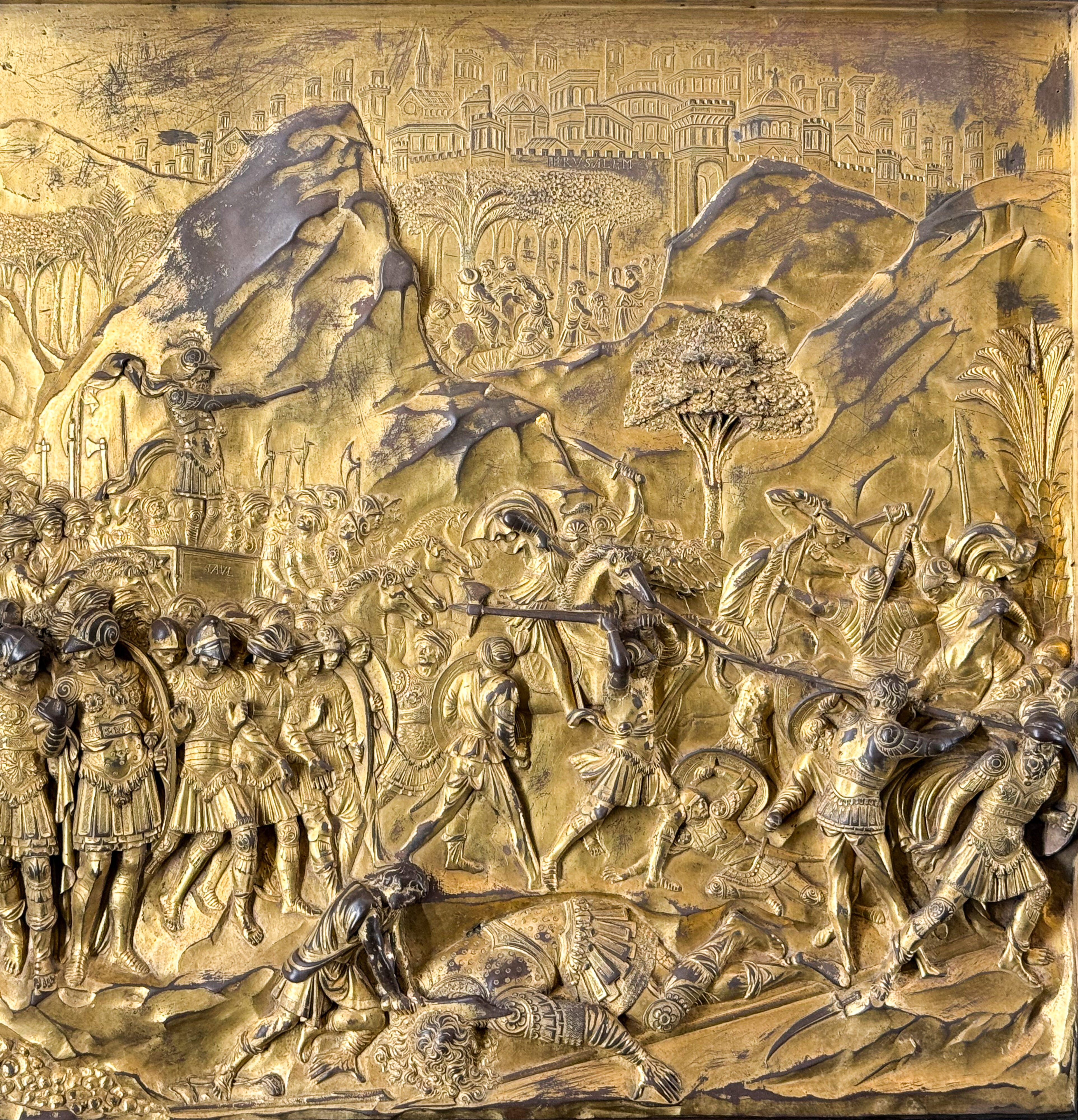
Ghiberti, Paradiestür, Schlacht mit David und Goliath, Detail
David genauso wie Judith erscheinen in Florenz mehrfach als Retter ihres Volkes. Deshalb tauchen sie auch hier wiederholt auf. Das Selbstverständnis von Florenz als sich behauptender Stadtstaat spiegelt sich in dieser Themenwahl. „Florenz – Ghiberti und das Paradiesportal“ ist mein Einstieg in Kunsterlebnisse, wie sie nur wenige Städte weltweit zu bieten haben.
Ghiberti, Paradise Door, Battle with David and Goliath, detail
Both David and Judith appear several times in Florence as saviors of their people. This is why they also appear repeatedly here. Florence’s self-image as an assertive city-state is reflected in this choice of subject. Florence – Ghiberti and the Paradise Portal is my introduction to art experiences that only a few cities in the world can offer.
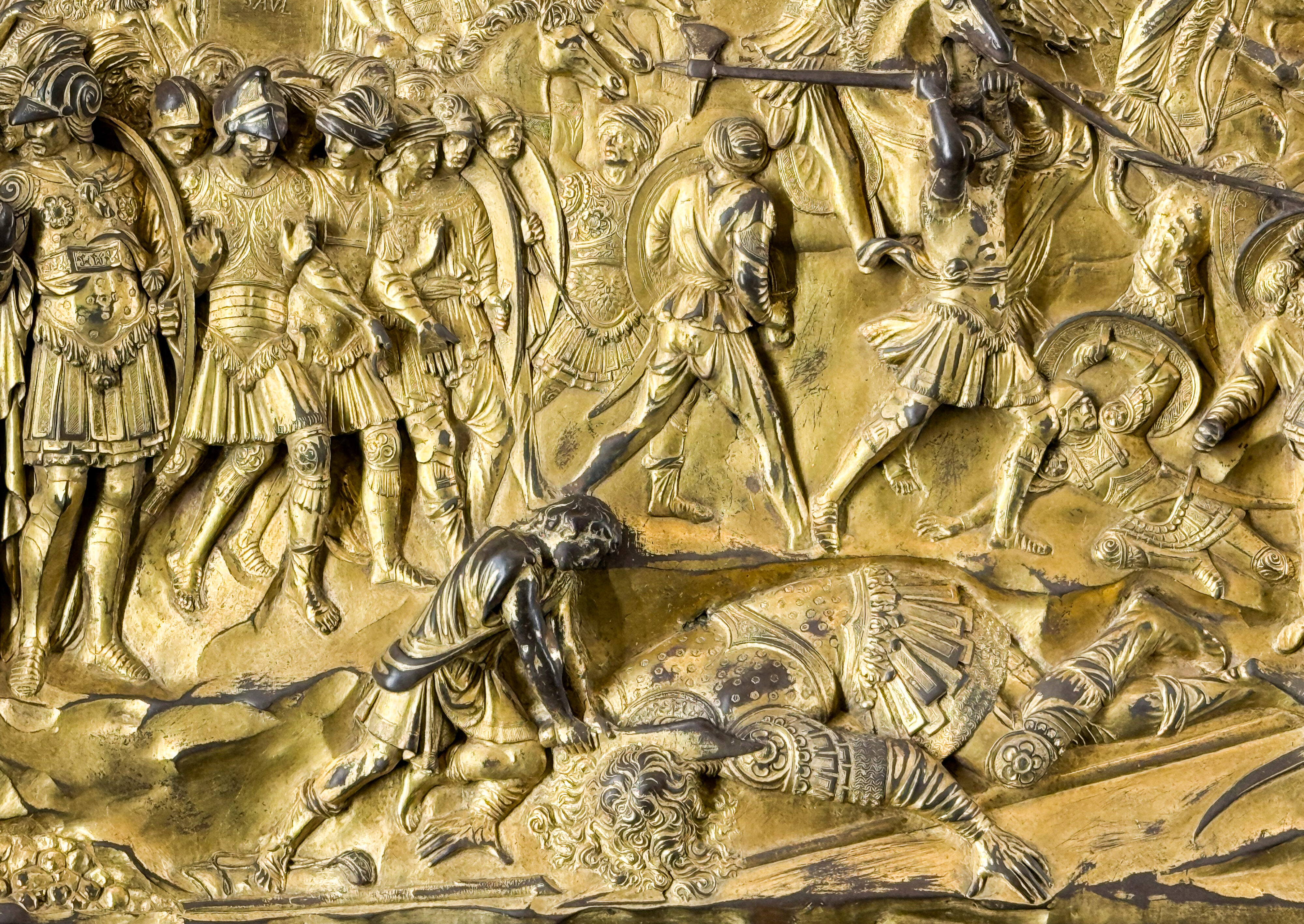
Detail des vorigen, David enthauptet Goliath. Soldaten schauen zu. Die Überlegenheit des jungen Hirten mit seiner Schleuder macht 1504 Michelangelos Skulptur zu einem Sinnbild für den Verteidigungswillen der Stadt Florenz.
Detail of the previous one, David beheading Goliath. Soldiers look on. The superiority of the young shepherd with his sling makes Michelangelo’s 1504 sculpture a symbol of the city of Florence’s will to defend itself.
